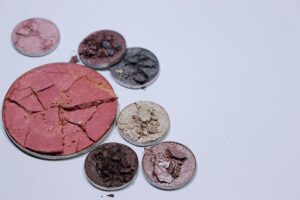A Step-by-Step Guide

In the diverse spectrum of skin tones, olive skin stands out for its unique combination of warmth and undertones. If you’ve ever wondered whether you have olive skin, you’re not alone. Understanding your skin tone is essential for choosing the right makeup, clothing, and hair colors that enhance your natural beauty. In this in-depth beauty blog, we’ll unravel the mystery of olive skin, explore its characteristics, share methods to determine if you have this unique tone, and offer personalized tips for embracing and celebrating your olive complexion.
The Characteristics of Olive Skin
Olive skin is characterized by a warm, golden undertone with a greenish or grayish hue. While it’s more commonly found in individuals with Mediterranean, Middle Eastern, or Latin American ancestry, olive skin can be present in various ethnic backgrounds. Here are some key features of olive skin:
- Undertones: Olive skin typically has warm undertones with a greenish or grayish cast. This subtle undertone distinguishes it from other warm skin tones, such as golden or peachy.
- Tanning Ability: People with olive skin often tan easily and rarely burn. The melanin levels in olive skin provide a natural defense against the sun’s rays, resulting in a gradual, golden tan.
- Vein Color: Check the veins on your wrist. If they appear more green than blue, you likely have olive undertones. This is a key indicator of olive skin, as the greenish hue is a result of the interplay between melanin and hemoglobin.
- Hair and Eye Colors: Olive skin is versatile when it comes to hair and eye colors. People with this skin tone may have dark brown or black hair, but lighter shades can also complement olive skin beautifully. Eye colors range from deep brown to hazel and green.
- Blush and Lip Colors: Peachy or rosy blushes tend to complement olive skin, adding a healthy flush without overpowering the natural warmth. Lip colors in warm tones, like coral or berry shades, can be particularly flattering.
Determining if You Have Olive Skin
While recognizing the characteristics of olive skin is a good starting point, there are specific tests and observations you can make to determine if you indeed have this unique skin tone.
- Vein Test: Examine the veins on your wrist under natural light. If they appear more green than blue, it suggests olive undertones. This greenish tint is a distinctive feature of olive skin.
- Sun Reaction: Take note of how your skin reacts to the sun. If you tan easily and rarely burn, it aligns with the typical behavior of olive skin. The ability to develop a golden tan without much sun sensitivity is a common trait.
- Jewelry Preference: Consider the jewelry colors that complement your skin. People with olive skin often find that gold jewelry enhances their warmth, while silver may appear too cool against their complexion.
- Fabric Test: Hold up different colored fabrics to your face, including warm and cool tones. If earthy tones like olive green, warm browns, and rich yellows enhance your complexion, it’s a sign that you have olive skin.
- Reaction to Makeup: Pay attention to how your skin reacts to different makeup shades. Olive skin tones often look radiant in warm tones like peach, terracotta, and gold. If cool tones like silver or icy blues seem harsh, it may indicate warmer undertones.

Tips for Embracing Your Olive Skin
Now that you’ve determined that you have olive skin, let’s explore personalized tips to enhance and celebrate your unique complexion:
- Foundation Match: When selecting a foundation, choose shades with warm undertones that complement your olive skin. Avoid foundations that are too pink or too yellow. Many beauty brands now offer foundation ranges specifically designed for olive skin tones.
- Bronzer and Contour: Opt for warm-toned bronzers and contour powders to enhance the natural warmth of your skin. Avoid overly cool or ashy shades, as they may appear unnatural against olive undertones.
- Blush Choices: Peachy and coral blushes are excellent choices for olive skin. These shades add a healthy flush to the cheeks without clashing with the warm undertones. Experiment with shades like terracotta and rose to find what suits you best.
- Lip Colors: Olive skin pairs beautifully with a range of lip colors. Warm tones such as corals, terracottas, and berry shades can enhance your natural warmth. Experiment with different shades to find what makes you feel confident and radiant.
- Eye Makeup: Earthy and warm eyeshadow tones, such as bronze, olive green, and warm browns, can beautifully complement olive skin. However, feel free to experiment with a variety of colors to find the ones that resonate with your personal style.
- Clothing Choices: Embrace warm and earthy tones in your clothing choices. Olive green, mustard, warm browns, and rich yellows can accentuate the warmth of your skin tone. Avoid colors that are too cool or overly vibrant.
- Hair Color: While olive skin is versatile with various hair colors, rich, warm tones often enhance the complexion. Consider shades like chestnut brown, caramel, or warm auburn. Balayage or highlights can add dimension without overpowering your natural warmth.
Understanding and embracing your olive skin tone is a journey of self-discovery and empowerment. By recognizing the unique features of olive skin and making informed choices in your beauty and fashion routine, you can enhance your natural warmth and radiance. Whether it’s selecting the right foundation, experimenting with warm-toned eyeshadows, or choosing clothing colors that complement your skin, unlocking the secret of your olive skin opens the door to a world of personalized beauty that celebrates your individuality. Embrace your olive glow, and let your natural warmth shine through with confidence and style.




